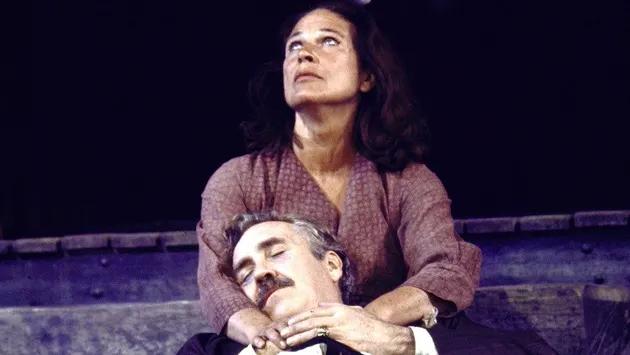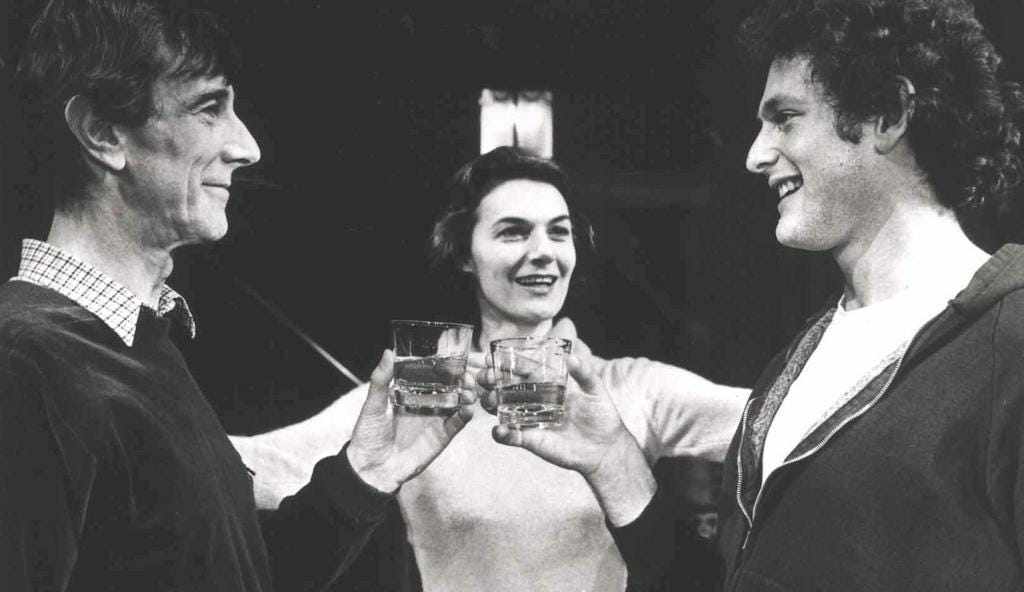
George S. Kaufman and Moss Hart's 1936 Broadway comedy has been a staple of community theatres and high schools across the country for more than eighty years. Why? I'm not sure I have all the answers, but here are a few of them in today's "Theatre Yesterday and Today."
Like so many, I did a lot of plays in high school. And by a lot, I mean, a LOT! Back in the mid-1970s, when budgets weren’t as tight as they are today, Great Neck South Senior High School on Long Island was ambitiousness personified. We put on a fall play, producing such overreaching dramas as Archibald MacLeish’s J.B., a modern retelling of the Book of Job and Marat/Sade, and Peter Weiss’s rumination on the Marquis de Sade and Jean-Paul Marat when both were inmates in an insane asylum. Not exactly fluff stuff. We would do a holiday choral concert every December, often performing a short musical such as Prokofiev's Peter and the Wolf. Come February we would do a full-scale children’s theatre production like Peter Pan or The Wizard of Oz (in their musical versions of course). Then in April, we would insanely attempt large-scale operas like The Tales of Hoffman and Carmina Burana with the full school orchestra. Then would come the spring musical, always a big extravaganza like Kismet or South Pacific. And as if that wasn’t enough, we would finish up with an end-of-the-year gala to raise extra money for the drama department (since by that point we'd pretty much gone through the budget and then some). All in all, for someone as in love with the theatre as I was, this was a true gift. Not only did it bring me treasured friends I have carried over to this very day, but those opportunities furthered my theatrical education immeasurably. Believe me, I'm grateful for it.
Every February, a group called the Educational Theatre Association releases its annual survey of the most-produced musicals and plays at America’s high schools for the previous year. Perusing it recently, I blinked twice when I saw that for 80th time in the 81 years that the survey has been tallied, George Kaufman and Moss Hart’s You Can’t Take It with You placed on the list.

Written by the brilliant team of George S. Kaufman and Moss Hart, the comedy has proven popular ever since its Broadway premiere in 1936. It picked up that year's Pulitzer Prize for drama and its film version was 1938's fourth highest grossing film, winning the Academy Award for Best Picture (it starred James Stewart, Jean Arthur and Lionel Barrymore). It's also had three elegant and well-received Broadway revivals over the eighty-four years since its original production; most recently as 2014 starring James Earl Jones as Grandpa Vanderhoff. The play simply never seems to fail to captivate audiences with its wry humor and down-to-earth sensibility — an always winning combination. I attended its closing afternoon performance and was transported back in time to when plays of this kind were if not common fare, certainly set the bar high for that sort of achievement.
Its first Broadway revival was in 1965, when the actor-director Ellis Rabb, then the head of the APA-Phoenix Repertory Theatre, was in a deep bind. Attempting true rep in New York has been a risky business since the time anyone first tried it, and though some of the APA-Phoenix shows that Rabb and his first-rate team produced were well received, the box office didn't often reflect big business. As the company was facing a dire budget deficit, they chose to do to do something outside their usual fare with a revival of You Can’t Take It with You. It was hoped it might prove a crowd-pleaser as their previous production — Ibsen's The Wild Duck — was no one's idea of a laugh riot. Under Rabb’s inspired direction, boasting a cast that featured Rosemary Harris, Donald Moffat, Sydney Walker and Keene Curtis, it turned out to be exactly what they needed when it proved the biggest hit the APA-Phoenix had ever had.

The next revival, nearly twenty years later in 1983, was also directed by Rabb. Opening at the Paper Mill Playhouse in Millburn, New Jersey, its limited run was so successful that independent producers moved it to Broadway where it was a surprise hit. Of course, it didn't hurt that it starred the likes of Jason Robards, Elizabeth Wilson, Colleen Dewhurst, James Coco and Maureen Anderman, all of whom took pay cuts, signing on for the sheer joy of performing it. During its nearly two-year run, such terrific actors as Eddie Albert, Frances Sternhagen, George Rose and Rabb himself joined the company. I saw this production and it was superb; heartwarming and beautifully staged and acted. Preserved for posterity and videotaped by Showtime, here's a short clip that features a line reading from the divine Colleen Dewhurst that is one for the ages:
Only a few years prior, there was a special presentation broadcast broadcast on CBS in 1978. The wonderful cast included Art Carney (perfectly cast as the titular head of the family), Jean Stapleton, Mildred Natwick, Barry Bostwick, Blythe Danner and Harry Morgan. Morgan himself moved up to the role of Grandpa Vanderhoff when it was made into a TV half-hour for syndication (reset to the current time of the 1980s). There were also two versions produced as far back as the early days of television in 1945 and 1947.
One reason for its extraordinary popularity in those days is that it was a much-need salve for the wounds after World War II. And why not? The play portrays an eccentric family that lives life the way they want to live it. Not selfishly — not at all — but on their own terms. They are kind and considerate. They don’t want to be pushed around and told what to do, that’s all. None more so than Grandpa who never once paid any income tax. He didn’t like the idea of it when it came into law and so he just paid no attention to it. The way Kaufman and Hart deal with this somewhat sensitive issue (when the play was first performed this was close to a communist’s way of thinking), is by using a powerful weapon: humor. Many of the world’s problems can be bettered that way, which is part of the play’s message.

The Frank Capra 1938 screen version is a rather different animal from the play. The screenwriter was Robert Riskin (he of most of Capra's greatest films; It Happened One Night, Mr. Deeds Goes to Town, Meet John Doe). But for specific reasons, Riskin took liberties with Kaufman and Hart's text, mostly to bolster the roles of the ingénues, due to having cast James Stewart and Jean Arthur. He also enlarged the role of Mr. Kirby, played by Edward Arnold, which didn’t really gibe with keeping the play more about the Sycamore family. But with Lionel Barrymore, Spring Byington and a very youthful Ann Miller (who claimed to be seventeen when it was shot, but she was most probably older than that), it's a joyous cast to watch in action. The famous "Capra touch” was totally present and with this film he won his then-unprecedented third Academy Award for Best Director.

It is my fervent wish that theatre comes back as strong as ever post-Covid. But it's vitally important that we also return to heavily funding arts education. Those responsible for school budgets must seriously reconsider how important it is to bring back programs like the ones I was fortunate enough to enjoy and that once were commonplace. Yes, I ended up going into the profession, but I still retain high school friends who have nothing to do with the business, who all recall fondly their days doing plays and musicals with me. There is no substitute for those once-in-a-lifetime experiences, even if you only partake once in your life. The memories stay forever, which is why I always urge anyone (at any age) to take part in a school or community theatre play just to know what it’s all about. And trust me, it provides a lifetime of memories.
Who says you can’t take it with you?
If you enjoy these columns, check out Up in the Cheap Seats: A Historical Memoir of Broadway, available at Amazon.com in hardcover, softcover and e-book. And please feel free to email me with comments or questions at Ron@ronfassler.org.





















Write a comment ...